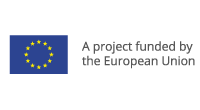Paris Agreement
Parties to the U.N. Framework Convention on Climate Change (UNFCCC) reached a landmark agreement on December 12 in Paris, charting a fundamentally new course in the two-decade-old global climate effort with 195 countries adopting the first-ever universal, legally binding global climate deal.
The agreement sets out a global action plan, reaffirming the goal of limiting global temperature increase well below 2 degrees Celsius, while urging efforts to limit the increase to 1.5 degrees.
The agreement provides a common framework that commits all countries to put forward their best efforts and to strengthen them in the years ahead. This includes, for the first time, requirements that all parties report regularly on their emissions and implementation efforts, and undergo international review.
The Paris Agreement is a bridge between today's policies and climate-neutrality before the end of the century.
Mitigation: reducing emissions
The Paris Agreement articulates the following long-term emission goals: (i) keeping the increase in global average temperature to well below 2°C above pre-industrial levels, while aiming to limit the increase to 1.5°C, since this would significantly reduce risks and the impacts of climate change; (ii) a peaking of emissions as soon as possible, recognising that this will take longer for developing countries;(iii) achieving net greenhouse gas neutrality in the second half of this century.
The core mitigation commitments are common to all parties, but there is some differentiation in the expectations set: developed countries “should” undertake absolute economy-wide reduction targets, while developing countries “are encouraged” to move toward economy-wide targets over time. In addition, developing countries are to receive support to implement their commitments.
Nationally Determined Contributions (NDCs)
The contributions that each individual country should make in order to achieve the worldwide goal have been determined by all countries individually and called "Intended Nationally Determined Contributions"(INDCs), submitted before and during the Paris conference. Parties are requested to communicate and register to the UNFCCC new Nationally Determined Contribution (NDC) by 2020 and do so every five years.
The Intended Nationally Determined Contributions pledged during the 2015 Climate Change Conference serve—unless provided otherwise—as the initial NDCs. There will be no mechanism to force a country to set a target in their NDC by a specific date and no enforcement if a set target in an NDC is not met. Current contributions contained in INDCs are not yet enough to keep global warming below 2 C, but the agreement traces the way to achieving this target.
Transparency and global stocktake
The Paris Agreement rests heavily on transparency as a means of holding countries accountable, with common binding commitments for all parties and “built-in flexibility” to accommodate varying national capacities.
All countries are required to submit emissions inventories and the “information necessary to track progress made in implementing and achieving” their INDCs. The agreement engages the parties to (i) come together every 5 years to set more ambitious targets as required by science; (ii) report to each other and the public on how well they are doing to implement their targets; (iii) track progress towards the long-term goal through a robust transparency and accountability system.
Adaptation
The agreement establishes a global goal of enhancing adaptive capacity, strengthening resilience and reducing vulnerability to climate change, requiring all parties, “as appropriate,” to plan and implement adaptation efforts.
It commits enhanced adaptation support for developing countries, including a review of adaptation progress, and of the adequacy and effectiveness of adaptation support, in the global stocktake to be undertaken every five years.
Loss and damage
The agreement recognises the importance of averting, minimising and addressing loss and damage associated with the adverse effects of climate change. It also acknowledges the need to cooperate and enhance the understanding, action and support in different areas such as early warning systems, emergency preparedness and risk insurance.
Finance
The agreement commits developed countries to provide finance for mitigation and adaptation in developing countries. The EU and other developed countries will continue to support climate action to reduce emissions and build resilience to climate change impacts in developing countries. Other countries are encouraged to provide or continue to provide such support voluntarily.
Developed countries intend to continue their existing collective goal to mobilise USD 100 billion per year until 2025 when a new collective goal will be set.
Entry into force
The agreement will open for signature in April 2016. It will enter into force and thus become fully effective only if 55 countries that produce at least 55% of the world's greenhouse gas emissions ratify, accept, approve or accede to the agreement.
Click here to download the agreement



